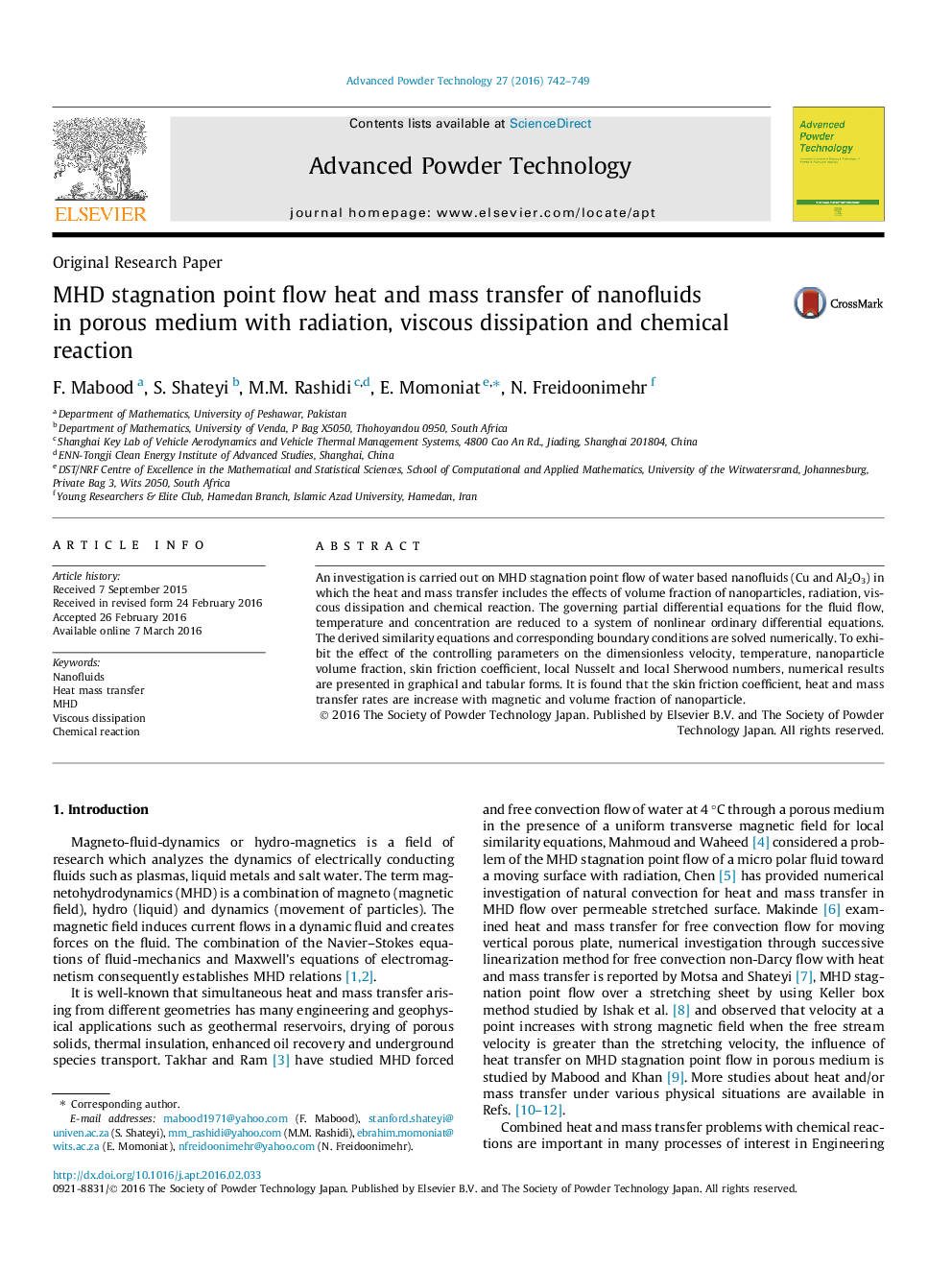| Article ID | Journal | Published Year | Pages | File Type |
|---|---|---|---|---|
| 144152 | Advanced Powder Technology | 2016 | 8 Pages |
•Velocity profiles decrease with increasing values of the nanoparticles.•Viscous dissipation and thermal radiation greatly enhance the temperature distribution.•The chemical reaction parameter reduces the concentration profiles.•Increasing the permeability parameter increases the skin-friction coefficient.•Nanoparticles and the chemical reaction increase the mass transfer rate.
An investigation is carried out on MHD stagnation point flow of water based nanofluids (Cu and Al2O3) in which the heat and mass transfer includes the effects of volume fraction of nanoparticles, radiation, viscous dissipation and chemical reaction. The governing partial differential equations for the fluid flow, temperature and concentration are reduced to a system of nonlinear ordinary differential equations. The derived similarity equations and corresponding boundary conditions are solved numerically. To exhibit the effect of the controlling parameters on the dimensionless velocity, temperature, nanoparticle volume fraction, skin friction coefficient, local Nusselt and local Sherwood numbers, numerical results are presented in graphical and tabular forms. It is found that the skin friction coefficient, heat and mass transfer rates are increase with magnetic and volume fraction of nanoparticle.
Graphical abstractVariation of dimensionless heat transfer rate with volume fraction of nanoparticles and radiation parameter.Figure optionsDownload full-size imageDownload as PowerPoint slide
